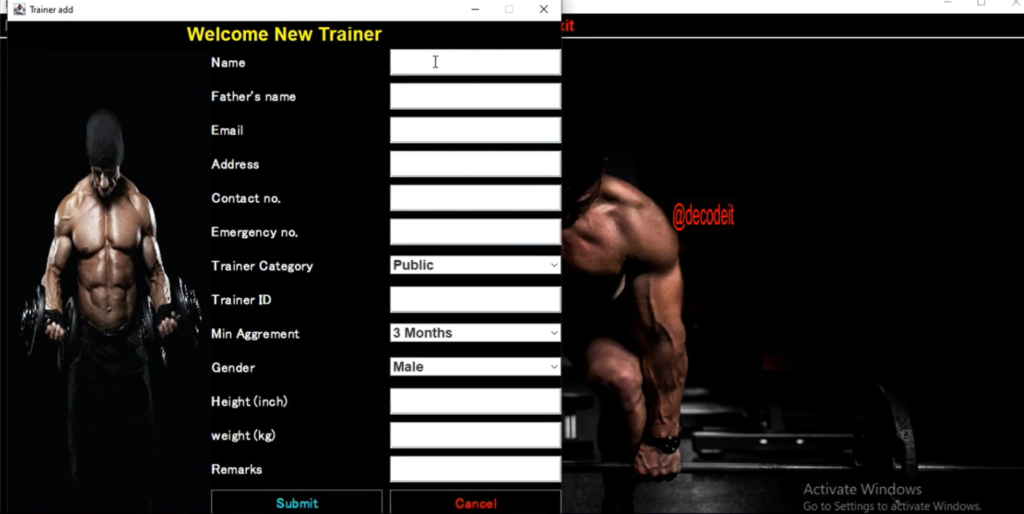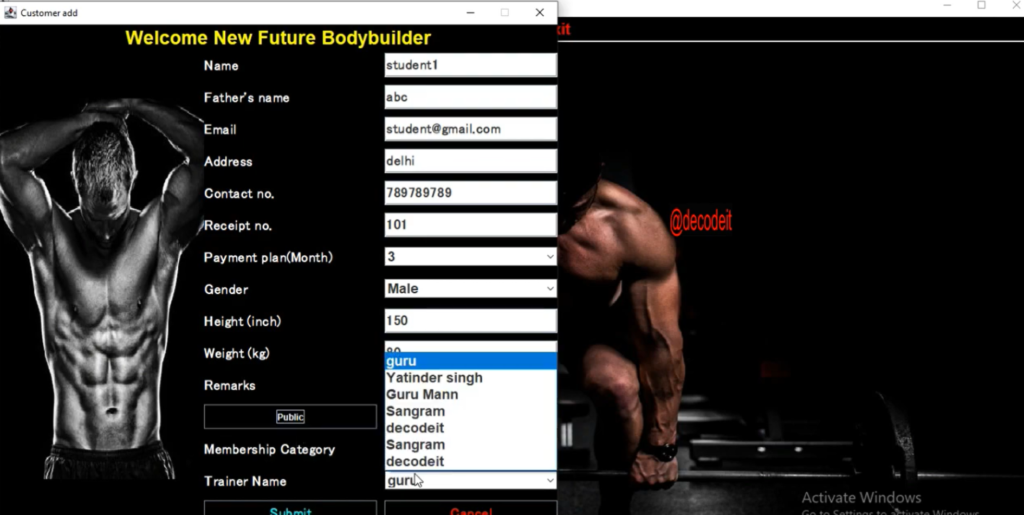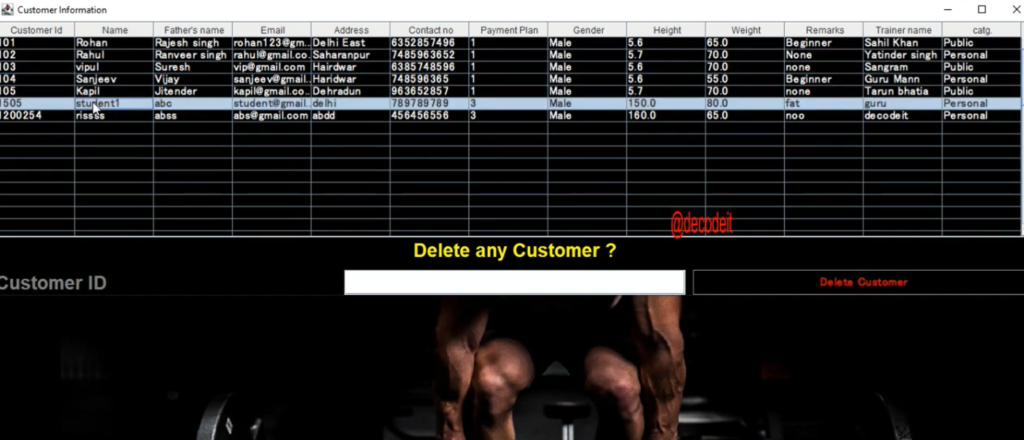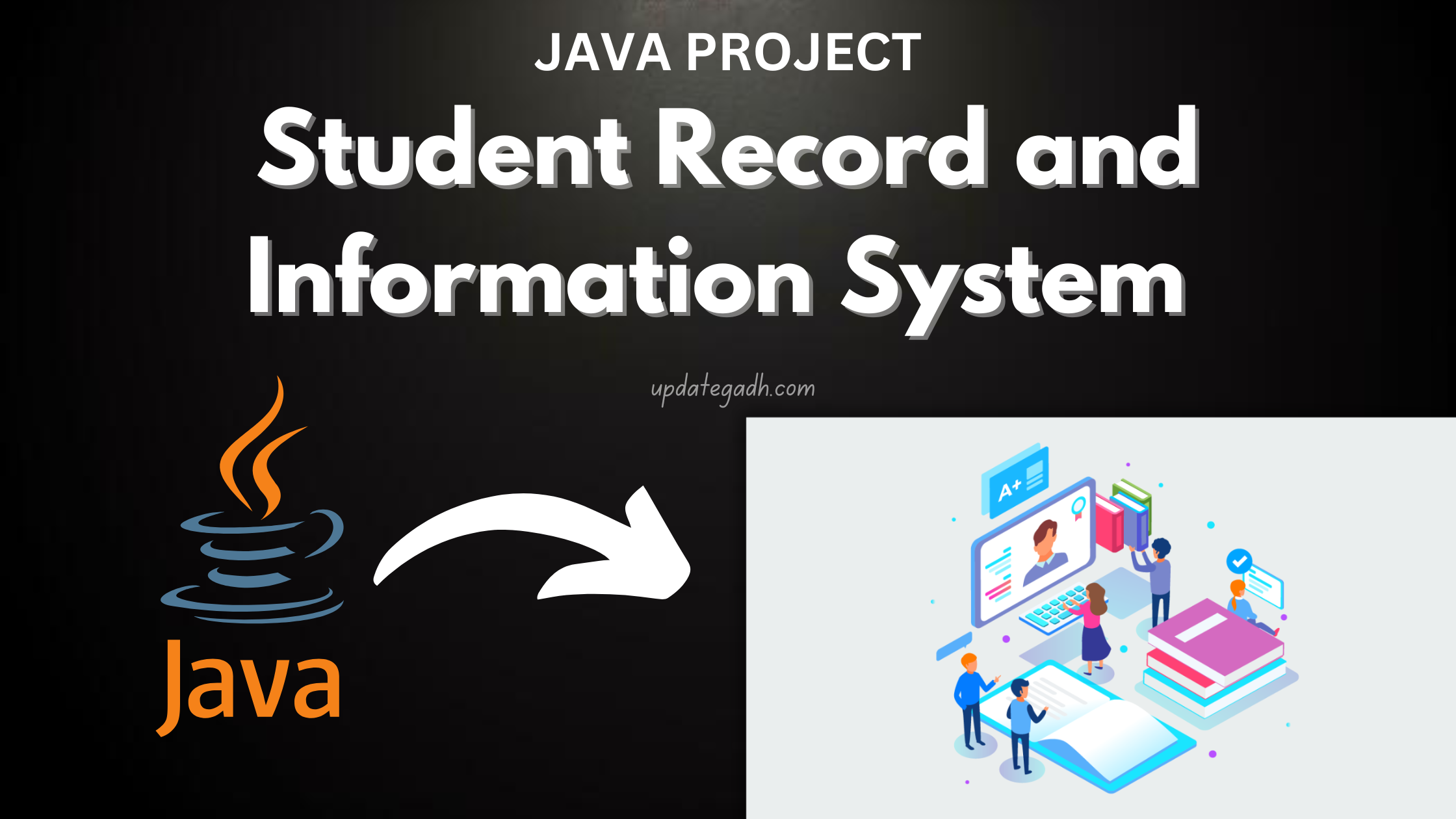
Gym Management System in Java
Gym Management System in Java
In the fast-paced fitness industry, gym owners and managers face numerous challenges—from tracking memberships to managing staff schedules and maintaining equipment. A Gym Management System (GMS) in Java offers a streamlined solution, making gym operations efficient and enhancing customer satisfaction. This post explores the key features and advantages of a Java-based Gym Management System, as well as why Java is a great choice for building such a system.
Why Choose Java for Gym Management System Development?
Java is widely known for its stability, security, and platform independence, which makes it an excellent choice for building robust applications like a Gym Management System. With Java, developers can create a system that functions smoothly on various platforms, whether on desktop, web, or mobile devices. Java’s extensive libraries and frameworks offer plenty of support, allowing developers to create complex, feature-rich applications in a manageable and scalable way.
Key Features
A well-designed Gym Management System aims to optimize operations, improve member experience, and increase staff efficiency. Here are the primary features such a system should include:
- Member Management
The core of any gym is its members, and a GMS must provide detailed member tracking, including registration, personal details, membership plans, and renewal dates. Java’s database connectivity makes it possible to securely store and manage large volumes of data, ensuring that each member’s profile is up-to-date and easily accessible. - Membership Plans and Billing
A flexible GMS allows gym managers to create different membership plans based on duration, access level, and price. The system can also automate billing, sending reminders to members when payments are due and generating invoices. Java’s integration capabilities make it easy to incorporate payment gateways, providing members with multiple payment options, including credit cards, debit cards, and online payment systems. - Staff and Schedule Management
Efficiently managing trainers, staff schedules, and availability is crucial for any gym. A GMS can allow managers to assign trainers to specific classes, track working hours, and generate payroll reports. Java’s multi-threading capabilities make it an ideal choice for developing scheduling and staffing features, allowing seamless real-time updates. - Attendance Tracking
With RFID cards, QR codes, or biometric integrations, a GMS can automatically track member attendance. This feature enables gym owners to monitor peak hours, understand facility usage, and personalize communication with members. Java’s compatibility with various technologies allows for easy integration with these modern attendance-tracking solutions. - Inventory and Equipment Maintenance
A GMS can also monitor gym equipment and inventory, sending alerts when maintenance is due or supplies are low. For instance, tracking the lifecycle of each machine can help managers budget for replacements or repairs. Java’s capabilities in handling data processing make it ideal for setting up reminders and inventory checks. - Reporting and Analytics
To grow a fitness business, data-driven insights are essential. A GMS in Java can generate detailed reports on member demographics, peak times, revenue, and staff performance. With Java’s powerful data-handling libraries, gym owners can receive regular insights, helping them make informed decisions about marketing, hiring, and expansion. - User Portal and Mobile App Integration
Offering members a user-friendly web or mobile app enhances their experience, allowing them to book classes, check schedules, and view workout plans. Java’s versatility across platforms makes it possible to build a unified experience across desktop and mobile, creating an engaging interface that supports member engagement.
Download New Real Time Projects :-Click here
Advantages
Building a GMS in Java provides several advantages beyond platform compatibility and rich functionality. Here’s why it stands out:
- Scalability: Java applications can scale easily, whether your gym is small or a large chain with multiple branches. Java frameworks like Spring make it possible to manage complex, multi-layered applications while keeping them stable and secure.
- Security: Fitness facilities deal with sensitive member data, including payment information and personal details. Java has built-in security features, including data encryption, to keep sensitive data safe from breaches.
- Reliability: Java’s performance and reliability are well-known. The language handles large volumes of data efficiently, ensuring that your GMS remains responsive and operational even during peak hours.
- Cost-Effective Development: Java’s open-source libraries reduce the need for expensive third-party tools, keeping development costs manageable.
https://updategadh.com/category/php-project



Contact Us to Get the Source Code:
If you need the source code for the Gym Management System in Java, feel free to reach out through any of the provided contact methods.
- Remotely Setup Project.
- The Full project files
- Database.
- Step-by-step configuration tutorial.
gym management system project in java and mysql gym management system project in java with source code gym-management system project in java github gym management system project report pdf gym management system project in java report gym management system project in sql Gym Management System in Java gym management software github gym management system in java with source code gym management system in java pdf gym management system in java github
gym management system in java example
Gym Management System in JavaLorem ipsum dolor sit amet, consectetur adipiscing elit. Ut elit tellus, luctus nec ullamcorper mattis, pulvinar dapibus leo.










Post Comment